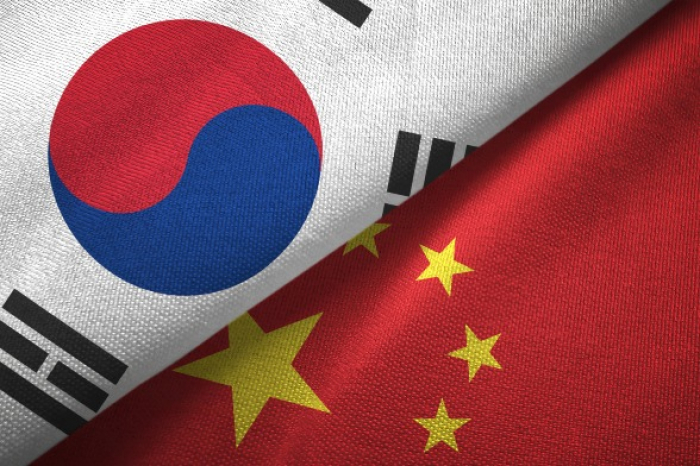Economy
Korean chip exports to China rise thirteenfold in 21 years
Precision machinery, fine chemicals, glass and petrochemicals have also extended their export dependence to China
By Aug 22, 2022 (Gmt+09:00)
2
Min read
Most Read
LG Chem to sell water filter business to Glenwood PE for $692 million


Kyobo Life poised to buy Japan’s SBI Group-owned savings bank


KT&G eyes overseas M&A after rejecting activist fund's offer


StockX in merger talks with Naver’s online reseller Kream


Mirae Asset to be named Korea Post’s core real estate fund operator



The report, issued by the Korea Chamber of Commerce and Industry, showed the country’s reliance on China in terms of exports of goods.
Korea’s precision machinery exports had the largest dependence on China, scoring 42.5%. Fine chemicals and semiconductors followed, with 40.9% and 39.7%, respectively. Glass ranked fourth with 39.3%, followed by petrochemical products recording 38.9%.
Semiconductor’s export dependence on China was 3.2% in 2000, jumping by 13 times to reach the beforementioned 39.7% posted last year. Korean display exports to China accounted for only 2% of its total display exports in 2000 and increased to 35.2% in 2021.
Some other Korean products showed highly increased export dependence on China during the same period: precision machinery exports went up from 7.5% to 42.5%; ceramics rose from 5.6% to 32.3%; and telecommunication equipment grew from 1.5% to 27.9%.
In 2000, some top Korean products with heavy dependence on exports to China were timber with 42.3%, leather and shoes scoring 38.8%, petrochemical products recording 33.4%, and other electronic components with 27.2%.
“While consumer goods export dependence was relatively reduced, technology-intensive products exports hiked over the past two decades. It resulted as both countries’ industrial structures have significantly changed during the period,” the report said.
Some high-value-added products’ dependence on China could be hard hit when the two countries’ technology gap narrows, the report added.
Korea sold $162.9 billion worth of products to China last year, which accounted for 25.3% of Korea’s total exports. That's an increase of nearly nine times from $18.5 billion in 2000 when China made up 10.7% of Korea’s entire exports.
Korea’s imports from China also increased more than 10 times from $12.8 billion in 2000 to $138.6 billion in 2021. The import dependence on China nearly tripled from 8% to 22.5% during the same period.
Write to Ji-Eun Jeong at jeong@hankyung.com
Jihyun Kim edited this article.
More to Read
-
 EntertainmentChina's high entry barriers for Korean films, dramas
EntertainmentChina's high entry barriers for Korean films, dramasAug 22, 2022 (Gmt+09:00)
3 Min read -
 The KED ViewFour chip alliance: S.Korea's courage to overcome Chinaphobia
The KED ViewFour chip alliance: S.Korea's courage to overcome ChinaphobiaAug 09, 2022 (Gmt+09:00)
4 Min read -
 Beauty & CosmeticsChina's lockdown slams Korean beauty giants' Q2 earnings
Beauty & CosmeticsChina's lockdown slams Korean beauty giants' Q2 earningsJul 29, 2022 (Gmt+09:00)
3 Min read -

-
 Supply chainKorean manufacturers’ dependence on China intensifies
Supply chainKorean manufacturers’ dependence on China intensifiesJul 11, 2022 (Gmt+09:00)
3 Min read
Comment 0
LOG IN


